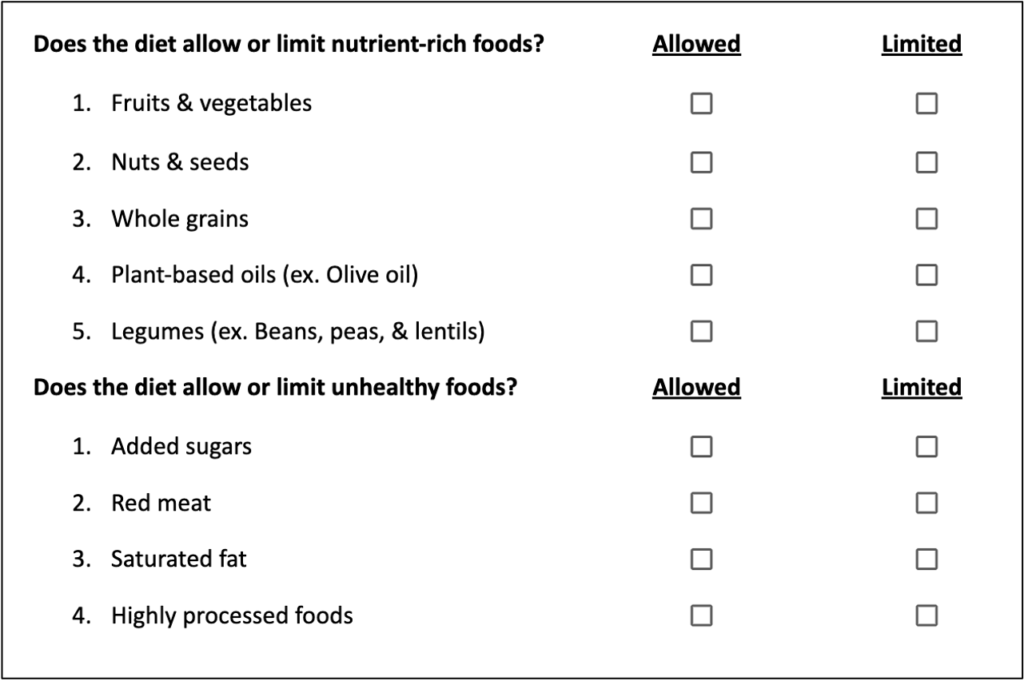
If you’ve ever thought about a nutrition change, you’ve probably read about Keto, Paleo, Whole 30, Intermittent Fasting and more (the list goes on and on). Even if you haven’t looked for information, you’ve probably seen social media content or heard about these trends from family or friends. How can you know if these diets are a good nutrition choice? No matter what the diet trend, there are simple questions you can ask to evaluate the diet’s nutritional value.
In general, diets that allow and do not limit nutrient-rich foods and that limit unhealthy foods are your best nutritional bets. Nutrient-rich foods include fruits, vegetables, nuts, seeds, whole grains, and legumes. These foods are associated with higher overall health and decreased risk of health conditions like heart disease. The goal is to prioritize and consume nutrient-rich foods often. Unhealthy foods are associated with lower overall health and increased risk of certain health conditions. The goal is to limit and reduce intake of unhealthy foods. Evaluate any diet with this checklist:

How does the diet stack up? Overall, does it allow your nutrient-rich foods and limit unhealthy foods? There is no magic diet, but eating a variety of nutrient-rich foods will set you up for success. Check out our Dietitian’s Guide to Popular Diets blog for more information on specific diet trends!
Don’t miss another great blog: Subscribe Now
